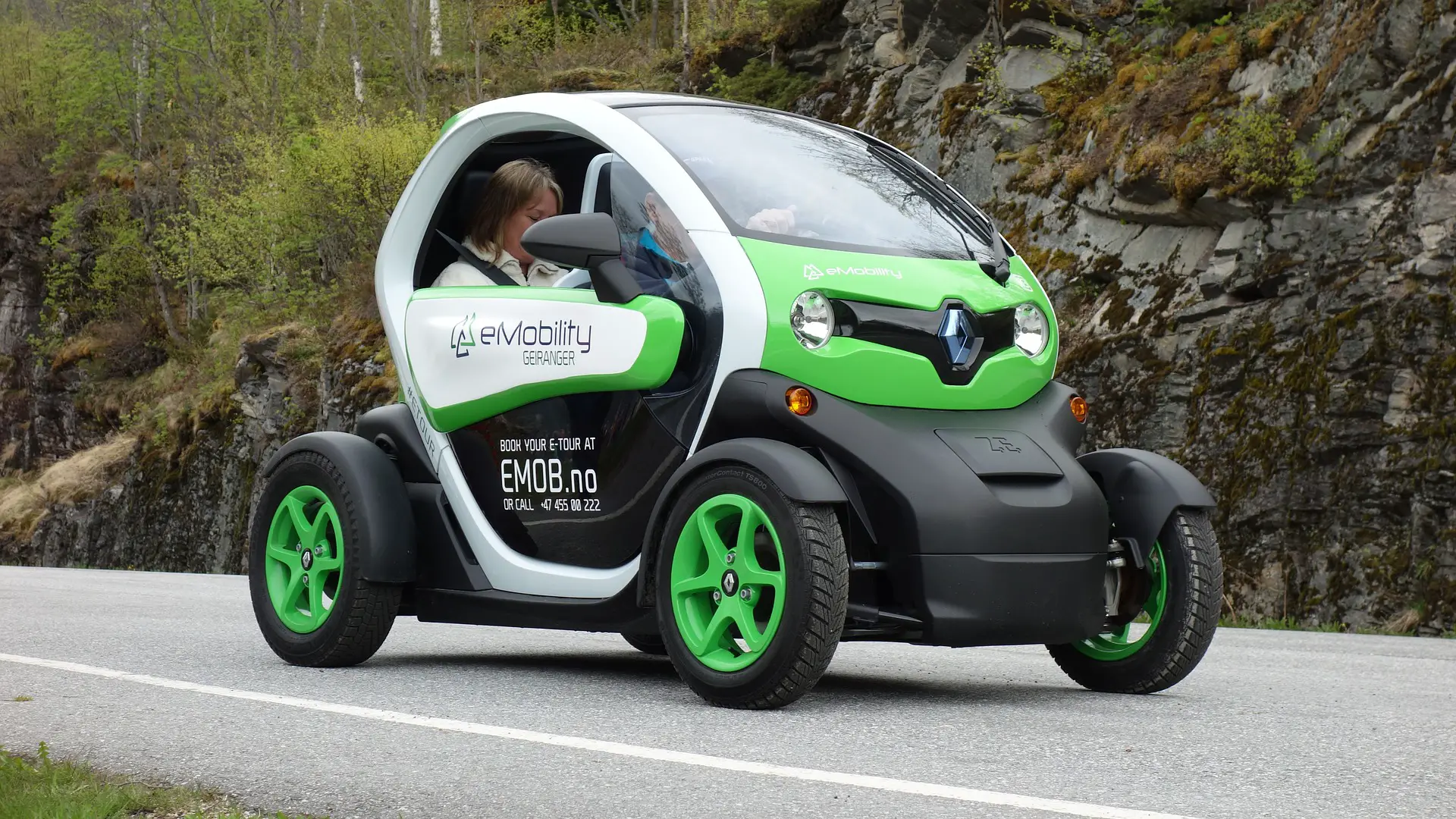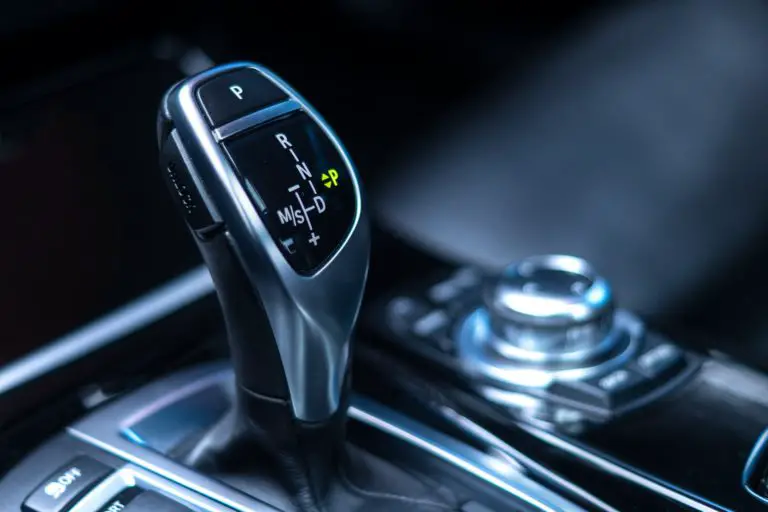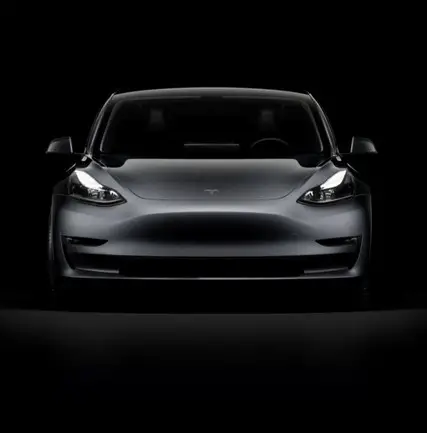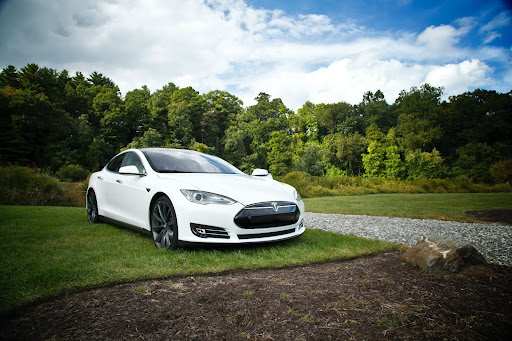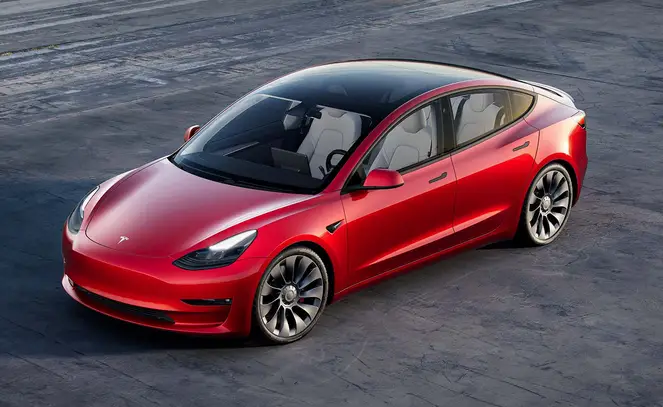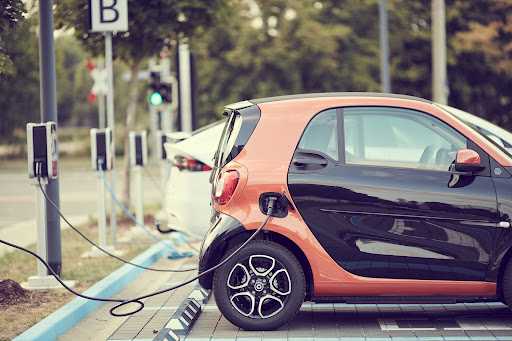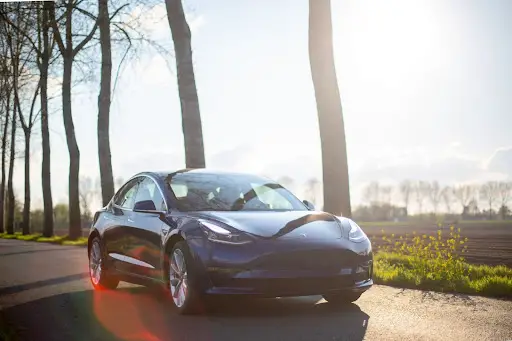Do Electric Cars Use AC Or DC Motors?
With the large-scale use of electric vehicles only beginning in the last few years, technologies have rapidly advanced. It is perfectly illustrated in the powertrain technologies used by electric car companies, where new, more efficient, and powerful motors are introduced regularly. Do electric cars use AC Or DC motors?
Electric car manufacturers use both types of motor, depending on the vehicle positioning. A high-performance vehicle with heart-stopping acceleration times will use an AC induction motor, whereas if the car is designed for long-range, it will use a DC brushless motor. Some vehicles use both types.
Each type of electric motor has advantages and disadvantages. While neither AC nor DC units are better than the other, each offers different benefits depending on the different characteristics of the car they are installed in.
Table of Contents
- What Is the Difference Between DC And AC Current?
- How Do Electric Motors Work?
- How Does DC Electric Motor Work?
- How Does An AC Electric Motor Work?
- The Different Characteristics Of DC And AC Motors
- How Does This Affect Electric Cars?
- What Motors Does TESLA Use?
- Conclusion
What Is the Difference Between DC And AC Current?
DC (Direct Current) is a current which runs in one direction from the negative to the positive side of the electrical circuit.
AC (Alternating Current) is a current which changes the direction of the flow of electrons (the north/south or positive/negative) and, therefore, the polarity of the power 60 times per second.
How Do Electric Motors Work?
To understand how an electric motor works, you need first to understand some basic principles of how electric current and magnetic fields interact.
- When a magnet is moved over a conductor (any wire or series of wires coiled around a central point), the conductor becomes a magnet. When the conductor becomes a magnet, it opposes the first magnet.
- Assume a magnet rotates around a shaft. A second magnet, placed nearby, spins towards or away from the magnet depending on which pole is facing it.
If you can automate this process, the result will be a motor.
How Does DC Electric Motor Work?
Two prominent magnets are installed on the casing covering the armature. A rotor with tightly bound copper wires (armature) is positioned on a shaft.
The (armature) is covered by a series of laminated steel plates that evenly cover the copper wires.
The ends of the armature wires continually touch the commutator. The commutator is a stationary component installed ahead of the coil in line with the shaft. As the motor rotates, the commutator remains fixed.
Each commutator side is connected to a DC electric current, i.e., negative and positive on opposite sides. As the armature rotates, these wires reverse the direction of the current, i.e., what was the negative connection now becomes positive.
The casing is fitted around the rotor.
The current is passed into the commutator from the negative to the positive field. It moves through the wires on the armature and makes it an electromagnet that generates a magnetic field.
This electromagnet tries to align itself with the two fixed magnets installed in the casing. When the poles of each magnet line up, they repel the armature, causing it to spin to the furthest side of the electromagnet, 1800, from where it was.
At this point, the spin stops.
Every time the armature rotates 1800, the current reverses, which causes the electromagnet’s polarity to switch around.
It causes the side of the stator, which was previously attracted to the fixed magnet, to be repelled again, turning the next 1800. The process continues, and so the motor spins without interruption.
How Does An AC Electric Motor Work?
As AC is alternating, the current reverses, creating the same effect as the fixed magnets in the casing of a DC motor.
As the current alternates backward and forwards, the poles in the windings around the rotor change. This repelling action causes the motor to turn around the rotor axis.
As the AC continually reverses, AC motors do not need the commutator, or fixed magnets, to change the current.
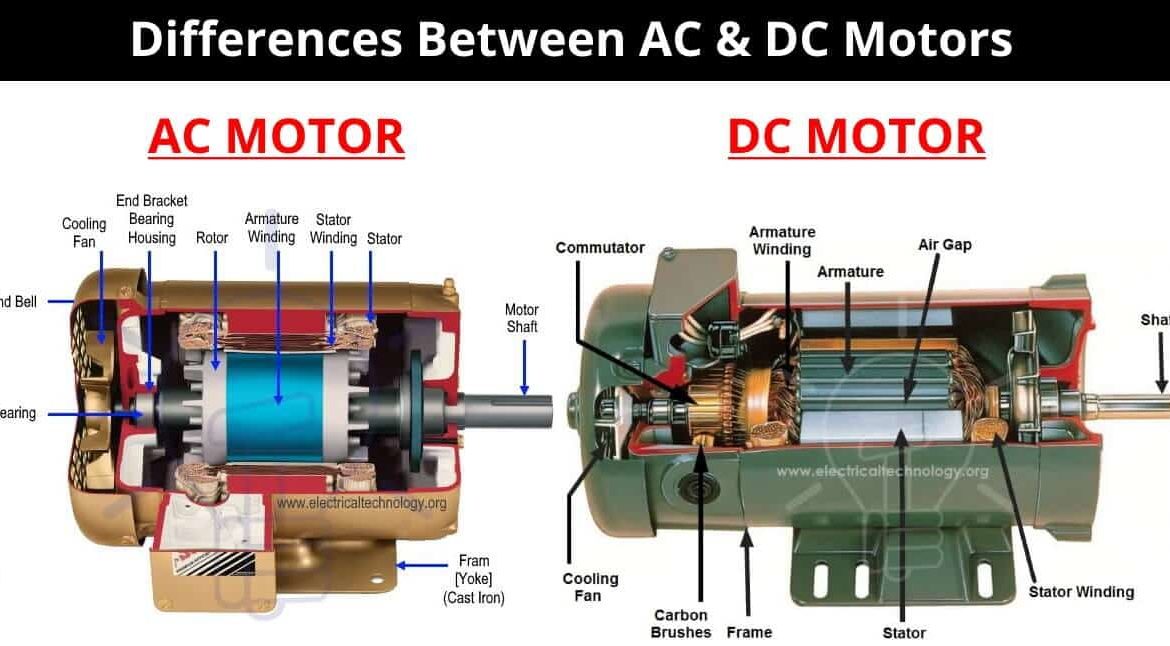
The Different Characteristics Of DC And AC Motors
Each motor type has its unique applications.
| Function | AC Motors | DC Motors |
| Sensitivity to change in current | AC motors are less responsive to a change in current. | DC motors are sensitive and respond immediately to a change in current. |
| Speed control | AC motor’s speed is changed by varying the current frequency. | Speed is controlled by varying the current to the armature |
| Maintenance | With fewer components and moving parts, AC requires less maintenance & is cost-effective. | DC motors have additional components (commutator) and more moving parts, requiring more maintenance. |
| Torque | The torque is higher at lower speeds. | The torque from a brushless DC motor decreases linearly with speed increase. |
| How is power transferred to the motor in an electric car? | The car’s battery produces a DC that must change to AC through an inverter. | The power can be sent directly to the motor from the battery. |
| Heat | An Induction motor runs hotter, and cooling is required. | A brushless DC motor does not generate high heat. |
| Cost | Induction motors require no magnets and have fewer moving parts; therefore, they cost less. | All DC motors require expensive Permanent magnets |
| Eco Benefits | An AC motor uses no magnets and requires no rare earth minerals to be mined. | The magnets in a DC motor require the mining of rare earth minerals. |
How Does This Affect Electric Cars?
On the face of it, a DC motor is very responsive to power changes, made by the accelerator’s position makes this motor more suited to power an electric vehicle.
However, some negative features favor an AC motor.
- DC motors have a lower top speed than AC motors.
- While the AC induction motors have slight torque reduction, DC motors quickly fall off as speed increases.
- An AC induction motor generates more peak power than a brushless DC motor.
- An AC induction motor is more efficient at highway speeds than a DC unit.
- DC motors have more moving parts and therefore require higher maintenance.
When an AC motor is used to power an electric car, an electronic speed controller is added. It overcomes the problems of the AC motor not being responsive to power changes.
What Motors Does TESLA Use?
While this article relates to the type of electric motors that electric vehicle manufacturers use, it is worthwhile using Tesla as an example (the leading electric vehicle manufacturer) because it uses both AC and DC motors in the different models of its range.
Tesla Model 3
The Tesla Model 3 uses an entirely new design brushless DC motor.
This proprietary designed motor is called the Permanent Magnet Switched Reluctance Motor (PMSRM). The PMSR motor is very efficient, lightweight, and produces 450HP.
The Model 3 is smaller than the Model S. The smaller dimensions and lighter weight made this the ideal choice for this car.
Tesla Model S and Model X
Tesla has positioned the Model S (Plaid) as a four-door sedan with hypercar speed and acceleration.
Tesla claims, which have been confirmed, that the Tesla Model S Plaid will accelerate from 0-60mph in 1.98 seconds.
To achieve this performance, Tesla has installed a 3-phase AC induction motor that drives the rear wheels and the two DC Permanent Magnet Switched Reluctance Motor (PMSRM), as in the Tesla Model, drive the front wheels.
By doing this, Tesla harnesses the benefits each motor offers. The AC induction motor offers high torque at low speeds, while the DC motor is optimized for a higher range.
Tesla Model Y
The 7-seater Tesla Model Y uses two of the same DC Permanent Magnet Switched Reluctance Motor (PMSRM) motors found on the Tesla Model 3.
Using this engine optimized for range endows the Model Y Long Range All Wheel Drive version with the ability to travel 326 mi (525 km) before recharging.
In line with the fact it has DC motors, acceleration times are “only” 4.8 seconds for the long-range model.
Conclusion
AC induction motors provide higher acceleration while being less energy efficient. While DC brushless motors or the equivalent built by individual manufacturers don’t match the AC induction motors in performance terms, they are more efficient and give the car a more extended range.
The rate new technologies are being developed and commercialized means that the motors, and the current which powers them, will become obsolete over the next few years. In the meantime, motor manufacturers deploy both AC and DC motors depending on the characteristics they build into their products.
Amazon and the Amazon logo are trademarks of Amazon.com, Inc, or its affiliates.

